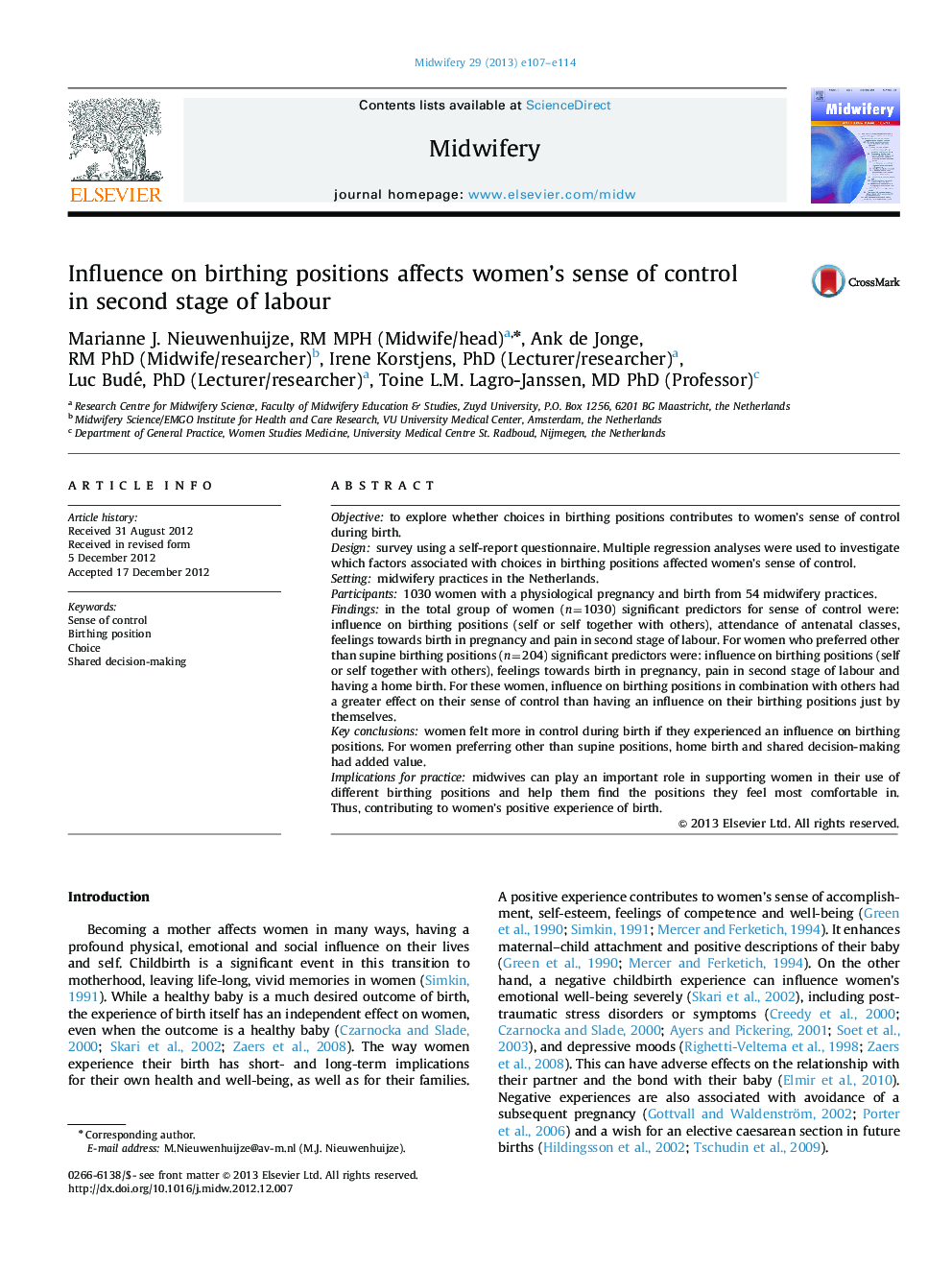| Article ID | Journal | Published Year | Pages | File Type |
|---|---|---|---|---|
| 1084761 | Midwifery | 2013 | 8 Pages |
Objectiveto explore whether choices in birthing positions contributes to women's sense of control during birth.Designsurvey using a self-report questionnaire. Multiple regression analyses were used to investigate which factors associated with choices in birthing positions affected women's sense of control.Settingmidwifery practices in the Netherlands.Participants1030 women with a physiological pregnancy and birth from 54 midwifery practices.Findingsin the total group of women (n=1030) significant predictors for sense of control were: influence on birthing positions (self or self together with others), attendance of antenatal classes, feelings towards birth in pregnancy and pain in second stage of labour. For women who preferred other than supine birthing positions (n=204) significant predictors were: influence on birthing positions (self or self together with others), feelings towards birth in pregnancy, pain in second stage of labour and having a home birth. For these women, influence on birthing positions in combination with others had a greater effect on their sense of control than having an influence on their birthing positions just by themselves.Key conclusionswomen felt more in control during birth if they experienced an influence on birthing positions. For women preferring other than supine positions, home birth and shared decision-making had added value.Implications for practicemidwives can play an important role in supporting women in their use of different birthing positions and help them find the positions they feel most comfortable in. Thus, contributing to women's positive experience of birth.
